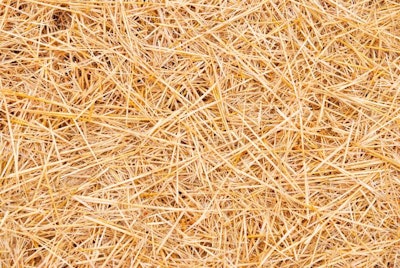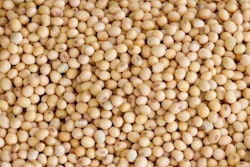
Cattle need to be fed the proper nutrients in the winter in order to maintain body heat while still maintaining the proper body condition. Feeding cattle wheat straw may keep cows full and prepare them for winter, a North Dakota State University Extension livestock expert recently explained.
John Dhuyvetter, extension livestock systems specialist at the North Central Research Extension Center near Minot, North Dakota, recently told the Tri-State Livestock News that, “as roughage in the rumen ferments and breaks down, heat is produced, which helps provide contentment in cold weather, and digestible nutrients are made available to meet the nutritional needs of the cow for maintenance and gestation.”
Feed consumed that provides more nutrients than needed is stored as fat.
“It is important to know that straw is a low-energy and low-protein feed," according to Alberta Agriculture and Forestry (AAF). "It is not as digestible as hay or green feed. Generally, a cow can consume 1.25 percent of her body weight in straw dry matter (DM).”
Therefore, a 1,400-pound cow could consume 17.5 pounds on a DM basis, or 19.9 pounds on an ‘as-fed’ basis if the straw was 90 percent DM.
If an operation is feeding a high-quality, nutrient-rich feed, a cow's nutrient need may be met in a quantity of feed less than what she has the appetite and ability to consume, Dhuyvetter said. Quality feeds may include early cut legume mixed hay, silage or grain products.
He added that providing a low-cost residue feed such as wheat straw to help keep cows full and prepared for cold weather may be an alternative to feeding unnecessary and costly feed options, assuming the cow is getting the nutrients needed from the quality feed.
Because a cow cannot get enough protein and energy from straw alone, producers can use protein and energy supplements. Good energy sources include cereal grains or good quality pellets or cubes. Protein can be supplemented by feeding canola meal, soybean meal, or beef protein supplements.
“Near the end of gestation, the capacity of the rumen is reduced by about 12 to 13 percent because the growing calf takes up internal space," AAF said. "Straw-based rations should not be fed at this time and they should not be fed once the cow has started to lactate. Save your best quality feed for this time.”
Straw feeding options
Cattle will eat oat straw before barley straw, followed by legume straws, and wheat straw. The quality of legume straw can vary on stem quality and whether the product is coarse. Aged straw tends to be more palatable.

















